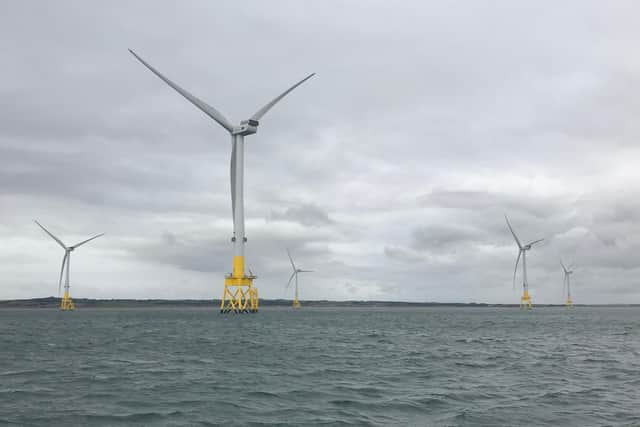Why Scottish businesses and local communities should come first in offshore wind boom
If the 17 schemes get the go-ahead, the country will see offshore wind capacity grow by a massive 25 gigawatts, enough to power more than 18 million homes, and should avoid around six million tonnes of climate-warming carbon dioxide from entering our atmosphere each year.
This new capacity is two-and-a-half times the entire existing offshore wind capacity across the UK and equal to the total current operational offshore wind capacity for the whole of Europe – so pretty big.
Advertisement
Hide AdAdvertisement
Hide AdAs well as the initial payments, this massive expansion of the sector is predicted to bring in “billions of pounds” in associated revenue and create thousands of new green jobs.


It demonstrates “a massive vote of confidence in Scotland”, according to First Minister Nicola Sturgeon and renewables industry leaders.
But there has also been criticism over the process, with political opponents claiming more money should be changing hands for the lucrative seabed rights, which they say are being virtually given away.
Fears have also been raised that foreign companies and governments will reap the rewards of Scotland’s offshore wind boom, rather than local people, and there will be a failure to ensure support for North Sea oil and gas workers as the nation moves to a green economy.
Before we rush out on a spending spree, the agreements are still to be officially signed – options will be offered to second-choice applicants if any deals fall through.
After that, details of supply chain commitments made by bidders will be published.
Then follows a lengthy process involving planning, consenting and financing before we will see turbines in the sea.
However, we can get the ducks in a row to prepare Scotland to be, in the words of Crown Estate Scotland chief executive Simon Hodge, “a major hub for the further development of this technology in the years to come”.
Advertisement
Hide AdAdvertisement
Hide AdMost will surely agree that everything must be done to ensure Scottish companies and workers are the top priorities as we go forward, putting communities before costs and guaranteeing the promised ‘just transition’ to a low-carbon society.
A message from the Editor:
Thank you for reading this article. We’re more reliant on your support than ever as the shift in consumer habits brought about by coronavirus impacts our advertisers.
If you haven’t already, please consider supporting our trusted, fact-checked journalism by taking out a digital subscription.
Comments
Want to join the conversation? Please or to comment on this article.
